Looking back at the road to Company of Heroes 3
Company of Heroes 3 had a long road to get here and is ready to strike
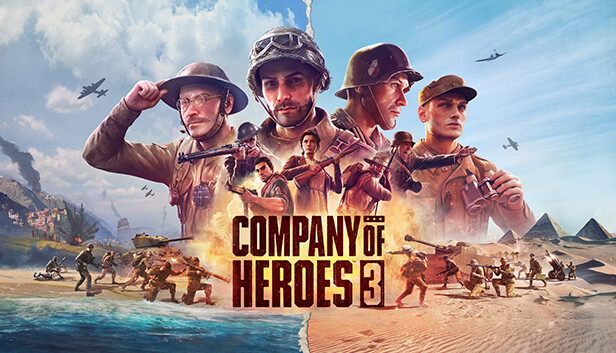
War is unending carnage. The Earth twists and bursts from below. The screams of men and rocket fire interrupt the cacophony of machine gun and rifle fire. There is no escape or peace. There is only fighting. In the fires of war, brothers stand together. Men fight side by side. Comrades protect each other. Brothers become a Company. In the face of great evil, a Company of Heroes is forged. Now, Company of Heroes 3 will make its stand this week, so let’s look back on the road so far.
SEGA and Relic Entertainment changed the face of real-time strategy when the first Company of Heroes launched in 2006. Lauded for it’s authenticity and visual presentation, Company of Heroes went on to be a milestone in the PC gaming space. It’s been over a decade since the last installment and the third game is finally ready to deploy.
A man with a plan
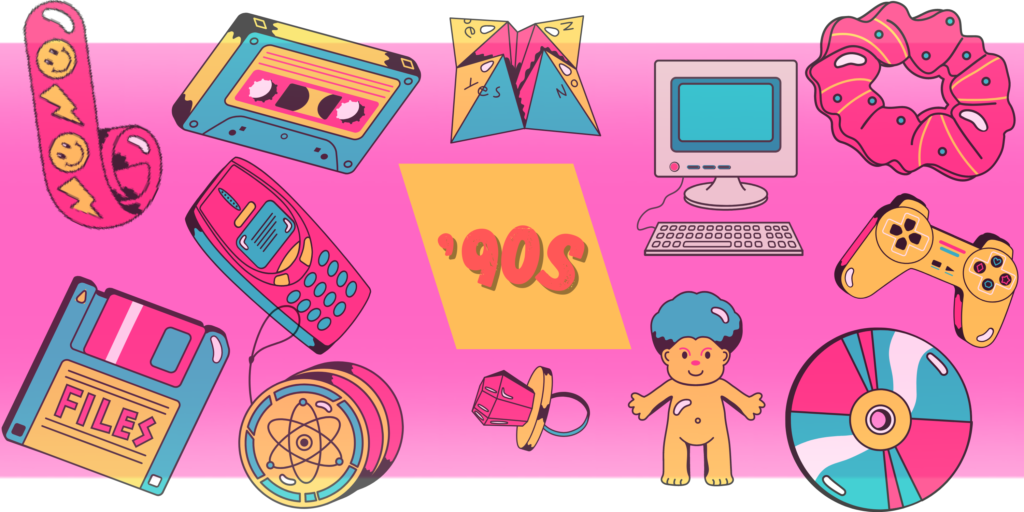
The 90s were a golden age in entertainment. Video games were moving upward from 16-bit to 32-bit to polygons. PC gaming exploded and the entire cultural zeitgeist was obsessed with all things space. Mmbop by Hanson was charting at number one and Nintendo introduced the world to a 3D Mario with the Nintendo 64. Toonami aired the climactic battle between Freiza and Goku on Namek in Dragonball Z and the chihuahua from Taco Bell was hyping hungry eaters for the coming of American Godzilla.
1998 arrived and July thundered with the sounds of war. On July 24, a director synonymous with science fiction and generation-defining movies released a movie that would make a direct impact on pop culture. The way movies were made changed because of this movie. The subject matter of World War II entered the cultural discussion. The movie became the butt end of rude jokes but that didn’t stop the movie from being one of the most profound war films of all time. That movie was Saving Private Ryan.
War never changes
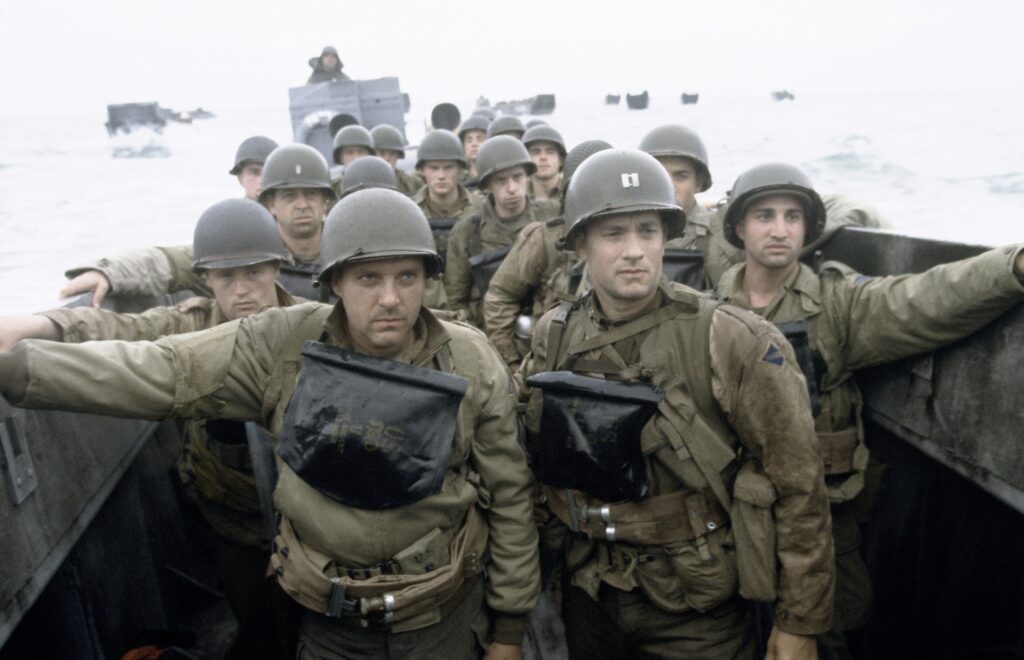
Director Steven Speilberg had a deep interest on the subject of World War II. The subject of the war, along with the Holocaust, was a common dinner conversation with his family as his dad was a Jewish veteran. He wanted to do right by his dad and everyone that fought. Steven has always been the innovator and alongside a top-team of producers, achieved a technical engineering feat the likes of which have never been done since. Saving Private Ryan is best known for the first 20 minutes as the movie depicts the largest amphibious assault ever undertaken. Saving Private Ryan begins with the Battle of Omaha Beach on June 6, 1944.
From the very beginning, audience are brought into the hellscape of war. Machine guns perched atop a hill but down men like a saw through meat. Gunfire snaps and explodes the sand. The ocean turns red with blood and dead fish. You can almost smell the salt of the sea and the stench of a body mauled by explosives. Men scream commands and orders, some yelling for their mothers as they lie dying on the beach. Soldiers fighting for every square inch just to survive. This is war depicted in the raw.
An epic story
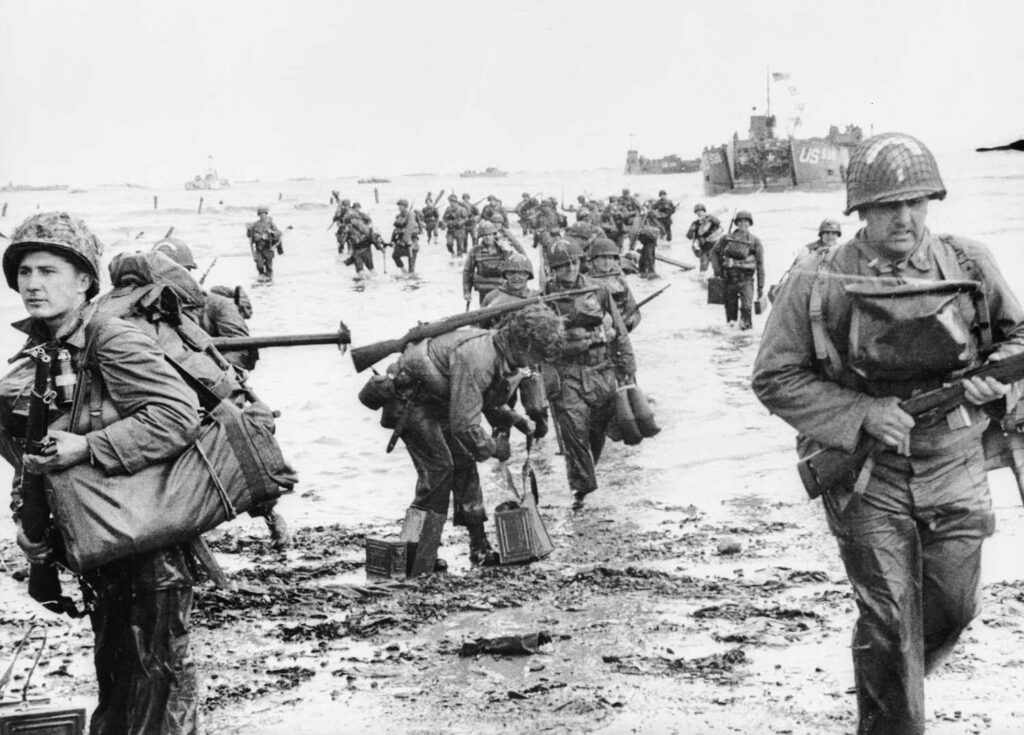
The depiction of war didn’t stop there. The drama of locating one man across an entire battlefield was based on a true story. Uniforms and equipment had to be painstakingly recreated. The banter and conversation among soldiers solidified the themes of brotherhood in battle. Other sequences of combat saw the characters entrenched in urban warfare and improvising with whatever resources they had.
Very few movies have come close to the depiction of war. The beach scene alone was a technological feat unlike any other in movie history. Saving Private Ryan went onto to receive universal acclaim and praise. Veterans even praised its attention to historical ac curacies. However, the movie was no mere one-off event. It became a cultural milestone that began to trickle into various corners of culture. This stream eventually made it’s way to video games. The road to Company of Heroes, and World War II games, began with meeting.
A Dream that Works
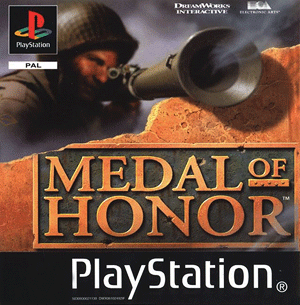
Steven founded DreamWorks Interactive and had a meeting with Electronic Arts about the capabilities of video games. Steven believed that video games had the capability of achieving the cinematic flare of movies. Inspired by his interest in World War II and his son playing Goldeneye 007, Steven helped spearhead development of a new game. This game was Medal of Honor and it paved the way for the modern-day WWII shooter.
Medal of honor released in 1999 and became a monumental success. The series even went leaps and bounds further with 2002’s Medal of Honor: Frontline for the PlayStation 2. Players flocked to the series to have that immersion of being a soldier with boot on the ground. It was a different era devoid of modern conventions like night-vision goggles and grenade launchers. It was raw and gritty and it gave players the chance to blast Nazi soldiers with bazookas. The age of the WWII shooter had begun.
A legacy in the making
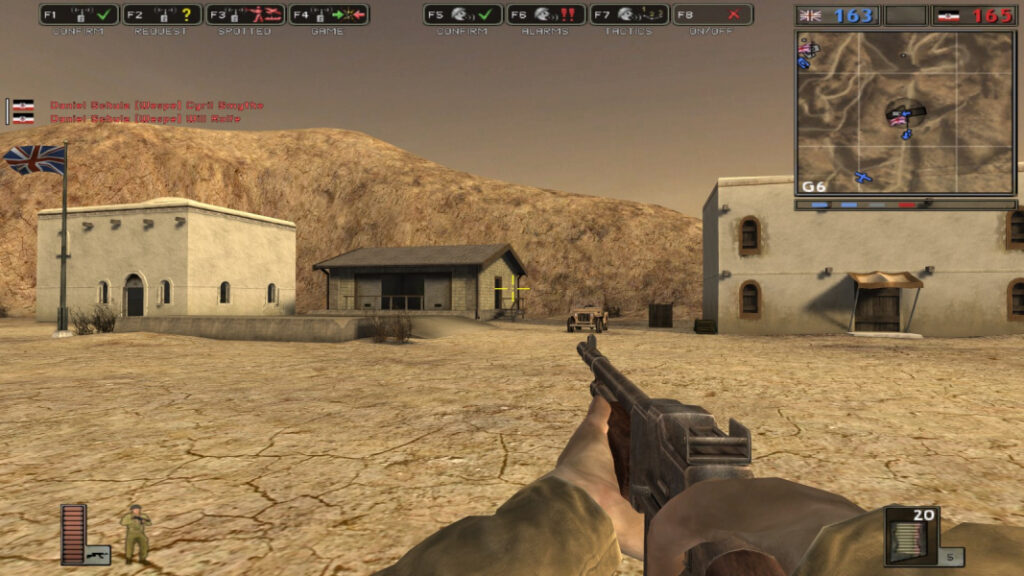
In the years that followed, Medal of Honor received a multitude of installments on an almost yearly basis. The series award-winning success spurned the competition to create their own experiences. 2002 saw the introduction of Battlefield 1942 which introduced large-scale online multiplayer combat the likes of which had never been seen before. 2003 caw a group of former Medal of Honor developers forger their own take on World War II with Call of Duty. Even Gearbox Software entered the fray with their Brothers In Arms games, which incorporated realistic combat conditions with tactical gameplay. Other games in WWII included Secret Weapons Over Normandy from Lucasarts and Heroes Over The Pacific from Ubisoft.
This renewed interest in World War II echoed through mainstream culture. In an age of Star Trek: The Next Generation, Friends, X-Files, and Buffy The Vampire Slayer, the youth of the 90s were now clamoring over Saving Private Ryan and World War II. Following the release of the movie, World War II became a focal subject for all things entertainment. The HBO series Band of Brothers went a step further with the subject and its depiction of war from the perspective of young soldiers in the 101st airborne division. Michael Bay created his grand epic of of tragedy and heroism with Pearl Harbor.
An unearthed Relic

World War II is a subject that is almost unending in scope. It was a global conflict where entire nations and continents were swept in combat. There are many stories still to be told and many more that have yet to be told for the first time. In the mid 00s, the biggest trend were first-person shooters. For a studio in Vancouver Canada, they were about to enter the battle themselves and put a new spin on the tried-and-true genre.
Relic Entertainment was founded in 1997 by a team of dedicated developers. Alex Garden, Luke Moloney, Shane Alfreds Aaron Kambeitz Erin Daly,, Rob Cunningham, and Gary Shaw were the founding fathers for the studio. The team stuck with the name” Relic” as it was easy to remember and something they enjoyed. The team hit the ground running and made a massive splash in the industry with their first game, Homeworld.
From home to another world
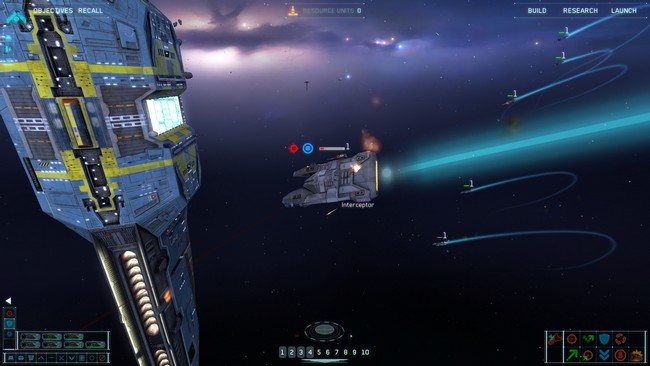
Homeworld was a sci-fi strategy game that became a behemoth in the community. Homeworld changed the game of real-time strategy by introducing a full 3D space. This was unheard of in the real-time strategy community as the genre always focused on the two-dimensional plane. With rich visuals and a story dripping with fascination, Homeworld became a runaway success for the studio. After a brief detour with the strange RTS Impossible Creatures, the team returned to Homeworld with Homeworld 2.
Homeworld 2 became another solid success for the studio. The sequel was lauded for building upon the foundation set forth by its predecessor. More units and abilities were available. The multiplayer portions and dynamic difficulty open the game to more players interested in the game. Homeworld 2 was another successful installment, but outside of the gaming community, certain powers were shifting and Relic would have to adapt. THQ bought the team out from a struggling Sierra Publishing. With new resources, the team were set for another grand strategy game in a future that is always at war.
For the emperor
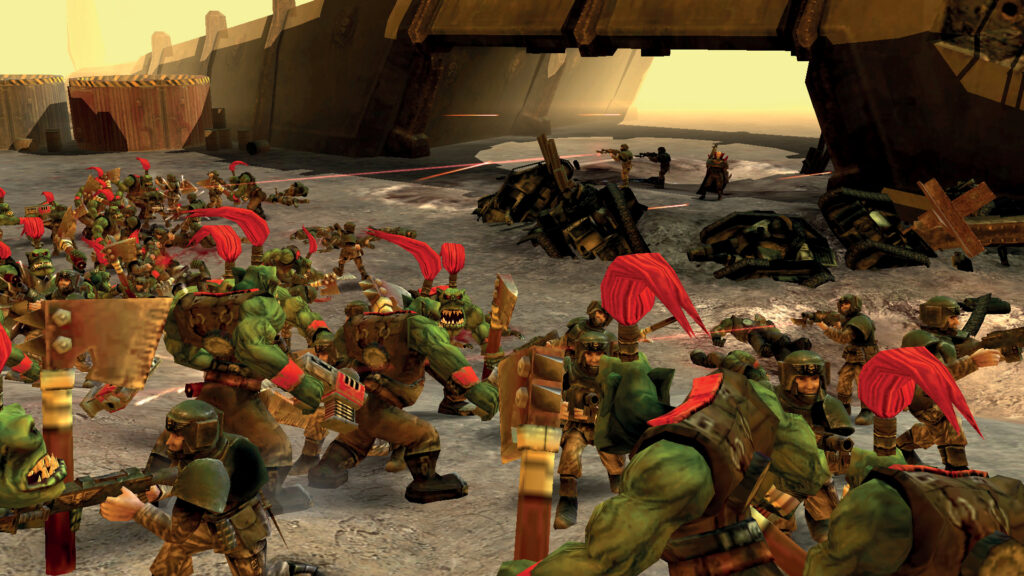
Relic Entertainment cut through the competition like an Imperium Space marine chain sword when they released Warhammer 40,000: Dawn of War took the familiarity of real-time strategy and cranked it up to new heights. From the presentation to the action, Warhammer 40,000: Dawn of War was a masterpiece that would garner more awards and acclaim from pc players. The game would go on to have more expansions and become a big hit for both the studio and publisher. With their time in space completed, the team back to Earth to set their sights on World War II. The team was about to make a career-defining game.
Relic set their sites onto the more familiar theme of World War II and released a first-person shooter exclusively for Xbox 360 called The Outfit. This was the team’s first foray into the World War II setting and first console release. The Outfit incorporated elements of fisrt-person shooting and strategy to create a hybrid gaming experience. The overall signature style of the game was to put demolition and explosions above all else. The game was met with a lukewarm reception and had to compete against the likes of Call of Duty 2 and Call of Duty 3.
The Company of Heroes arrive
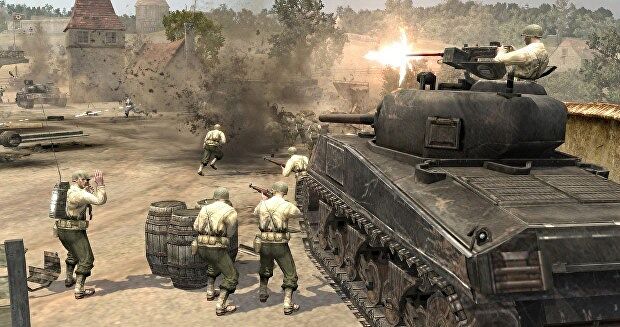
Taking the lessons from their entire development history, Relic began work on Company of Heroes. The team developed a brand-new engine just for the game, known as the Essence Engine. This engine allowed for a variety of production values that were unheard of at the time. Improved textures and various degrees of lighting were just some of the innovations introduced with the engine. The team also worked with the Havok engine to make the game more destructible and realistic. Buildings could sustain damage and tanks could drive through various obstacles. Company of Heroes was set to make history and on September 12, 2006, it did.
In the year 2006, players were growing weary of the beaches of Normandy and the sands of the Pacific. They had groaned at the sight of an M1 Garand and rolled eyes at another P-51 Mustang. While blowing up Nazis never gets old, it became clear players clamored for something new. Like the paratroopers depicted in the game, Company of Heroes landed and seized the gaming landscape, becoming a mighty force in the revitalization of the genre.
A grand theatre
Company of Heroes was gritty and cinematic. It was a recreation of World War II on a more strategic level, and one that provides the grittiness of combat with the cinematic flair of Hollywood. Each mission was not simply a mission but a battle that felt pulled straight from the annals of history itself. Missions were not mere search and destroy missions but rather changed up their objectives. Company of Heroes wasn’t a game but an experience. It challenged players and forged players into leaders fighting to win.
The story is rooted in fact and accuracy. This cements the foundation that players are not playing levels but actual places that were once battlefield in real-life. The story is told through the two perspectives. Able Company and the US Army’s 101st Airborne Division, known commonly as The Screaming Eagles. This lends to the sensation of camaraderie and brotherhood as featured in Saving Private Ryan and Band of Brothers.
Cinematic flair
Furthering this was the presentation of the game. The Essence Engine does a fantastic job in portraying realistic combat conditions with a cinematic flair. Particles of dust and dirt erupted from the ground. Shelling leaves craters in the Earth. Men take cover and interact with each other as gunfire flies around them. The rumble of a tank can almost be felt through the screen. The game does its job well in immersion and gameplay.
Company of Heroes became a huge success for Relic and THQ. The game would go on to win multiple awards for gameplay and presentation. This was a strong statement to make as first-person shooting went modern with Call of Duty 04: Modern Warfare and players leaped into modern combat settings. This kicked off a solid number of year for THQ and Relic. However, storm clouds were brewing. In the wake of a changing gaming landscape, a series of decisions would put Relic through one of the most difficult times in its history.
A red sequel

For Relic, the situation was tense. The team was working on Company of Heroes 2 at the time of bankruptcy. The liquidation forced the team to delay the release. Relic was eventually sold to SEGA. Their ownership of Homeworld went to Gearbox Software and Space Marine went to Focus Interactive. They had survived the liquidation process. Relic gathered together and managed to complete development of Company of Heroes 2.
Releasing on June 25th, 2013, Company of Heroes 2 put players into the boots of the Soviet Red Army. This involved a bevy of new units and battles as the setting changed to The Eastern Front of World War II. Compared to its predecessor, the focus squared on the Soviets fierce resistance to German forces during a brutal winter. Players were introduced to an entirely new army with new units and capabilities. The single player focused on new characters and terrain as players fought across the brutal terrain.
Melting the ice
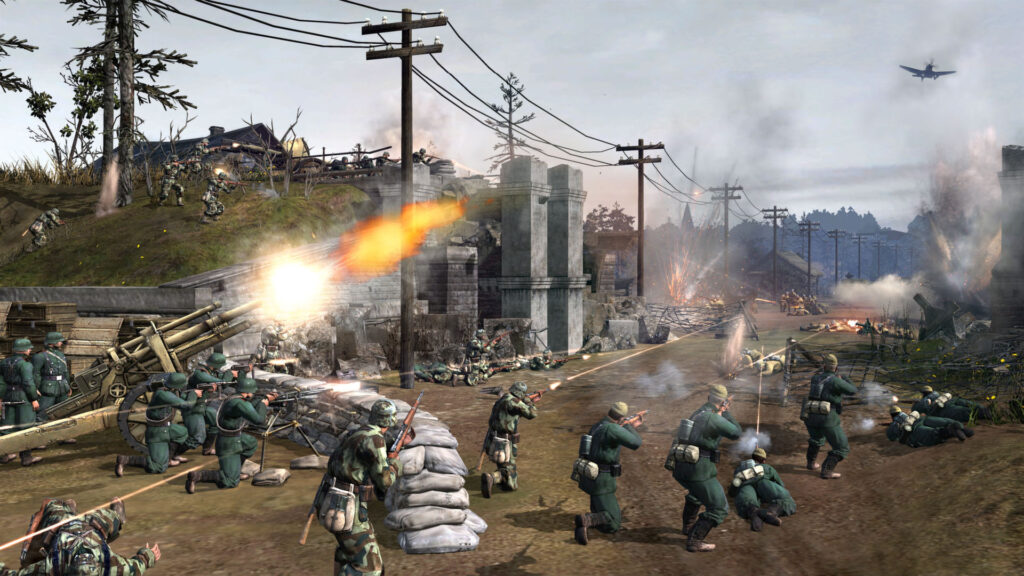
Company of Heroes 2 was not met with the same glowing enthusiasm as its predecessor but it was positively received. The new battlefront and added improvements were notable but reviewers noted it felt more like an expansion than a true successor. Fighting on the Eastern Front featured the familiar immersive experience of the first game and the focus on Soviet combat tactics made for a strong change of pace. It wasn’t the splash that some were hoping for but it was a competent accomplishment considering the circumstances that befell the studio.
It was a calamitous shuffle from THQ to Sega but the team found their groove again in due time. SEGA went through their own turmoil, with the cataclysmic disasters that were Sonic Boom: Rise of Lyric and Aliens: Colonial Marines. With new leadership, SEGA would bounced back as well as Relic. Warhammer 40,000: Dawn of War III released to strong acclaim and showed the team still had the skill. Age of Empires IV released in 2021 to even stronger acclaim, with one reviewer calling it probably one of the real-time strategy games ever made.
Returning to where it all started
It had been a long time coming for the team at Relic. Multiple generations and economic turmoil can take a toll on the hardiest of game developers. Relic persevered through it all. Seeing the changing landscape give way t micro-transactions and live service games, the team felt compelled to get back to their roots and reinvigorate them with wisdom. This brings us to Company of Heroes 3.
My time with Company of Heroes 3 had me attached to a member of the British Army in North Africa, fighting General Rommel of the Wehrmacht forces. The skirmish map entailed me seizing several points of contention, and maintain control until reinforcements were depleted. The typical rules of an RTS were established, form controlling units to generating units. With the basic out of the way, the skirmish began.
The heat of battle
Admittedly, it took a little while for me to get back into playing an RTS like Company of Heroes 3, as I hadn’t played an RTS in a long while, the last one being Sudden Strike 4. Like all things, the more I played, the better I got at maneuvering the battlefield and establishing control. The battle began small of course, and I was complimented by AI-controlled soldiers that assisted the units I was generating and controlling.
The initial outskirts of the battle were perhaps the most delicate, as I worked to establish the closest control points and generated enough resources for heavy weapons squads, and light armor. The enemy was already making strides capturing outposts. Like any good RTS, Company of Heroes 3was encouraging me to think on my toes, but also seize the vital parts of the map. After securing key positions, contact with the enemy was all but inevitable, and the fire had begun.
The ways of war
As combat began, I got to see the incredible ways in which my units responded. Calling commands, pointing out positions, all were done in remarkable detail, as if I flashed back into time to see an actual battle happening first hand. In my interface, I noticed I could order a squad to deploy a mounted machine gun. Clicking that, and establishing my cone of fire, one unit was able to provide effective fire against German forces. It was a tight location, as the outposted had some ruins and fortifications and wasn’t the ideal place to deploy the machine gun.
However, given that the Germans had a full strength platoon, and a mounted jeep, I made haste. The unit held their own but took losses, but after some persistence, including sending more units, the German unit was successful defeated and the position defended. Over time, I was able to send in scout jeeps and light armored tanks. The enemy happened to have some armor as well, as well as trucks. I worked to generate more armor and reconnaissance units, as more infantry. It didn’t appear I had access to aircraft or anti-armor units for the sake of the demo, but that was fine. .
An intelligent enemy
After sometime, Company of Heroes 3 became a matter of covering units, watching enemy movements, and getting into the very thick of various engagements. The A.I of the enemy was tenacious, even on normal difficulty With no anti-tank weapons, they feverishly tried to destroy one of the light armored units I had deployed on the battlefield. Likewise, several friend infantry units opened fire on troops transports and other lightly armored units, doing damage but putting themselves at great risk in the process.
Playing on keyboard and mouse, everything felt natural. Maneuvering the battlefield from the ground tot he air felt natural. Sound wide, the game was thunderous, with explosions and gunfire and a solid music score. Everything felt easy to understand and control. A developer even confirmed that in addition to the new theater of operations, units, and levels, the philosophy of the game was going back to the the ways of the first game, regarding controls and user-interfacing, making it great for newcomers and experienced players alike.
Victory is mine
Bombs fells, gunfire erupted, and explosions ensured during the courses of battle. Company of Heroes 3 truly felt like a battlefield happening under the blazing sun of North Africa. It became a bitter fight for control across the desert ruins, but in the end, only one side was victorious. The enemy forces dwindled and they were unable to fight or defend their positions. With the last reinforcements defeated, the British were victorious, and the demo came to a satisfying conclusion.
There was a resounding sensation of completion. I overcame an obstacle and succeeded with a profound victory. It’s the kind of feeling only a well-built RTS can give to players. There’s simply nothing quite like basking in the fact that a battle-trained enemy was outsmarted and ultimately defeated in the deserts of North Africa.
Wisdom is a virtue
It’s been a long time coming for the team. Much hard work and sacrifice ahs been made. Gaming has changed drastically since those golden years of PC gaming. There is something important in Relic’s endeavors and that is wisdom. Everything the team has built and made has leads to tis. Every success and failure has brought them tot his moment. To sum it up, Company of Heroes 3 felt like wisdom. It felt like a game that doesn’t want to remind what PC games once were but what they still can be.
When I played Company of Heroes 3, it felt like I was playing something refreshingly new and familiar. Furthering that feeling was the reachability of the game. It felt as if the team wanted to instill an experience that gives players all the tools they need to win but to also challenge that player in thinking tactically. It felt as if the team worked to bring everything it has ever learned and weave it into this moment. Company of Heroes 3 didn’t feel like another game. It felt special. It felt like a yearning to not to build nostalgia but to make a statement. This is how games need to be.
The battle ahead

The gaming landscape has changed drastically in the over ten years since Company of Heroes 2. Microtransactions and Live Service games have become the trend. Philosophies behind games have changed with some resorting to addressing cultural sensibilities in their development. The indie scene has exploded with an entire universe of game choices. Company of Heroes 3 will have quite the uphill battle.
Company of Heroes 3 has what most games lack and that is an understanding of power and capability. The team has forged their skill in various games. They have experience failure and set back as well. The team knows not just what makes a great game but what the player looks forward to. With that wisdom under their belt, Company of Heroes 3 is looking to make a big impact into modern games and spearhead a new future for RTS games.
Company of Heroes 3 launches February 23, 2023 with console releases to follow sometime in the year.

